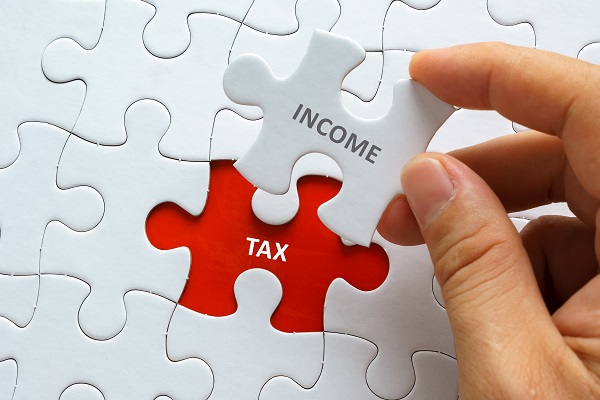Cess and Surcharge – Tax Levied by Indian Government

What is CESS?
The government generally collects cess to fund earmarked purposes. It cannot be used for any other purpose. The government has the power to introduce, remove, and alter a cess at any point of time. Let us look at some examples below.
Example of CESS
Health and education cess, Swachh Bharat cess, road and infrastructure cess, and cess on exports are some common forms of CESS that the government levies.
What is Surcharge?
A surcharge is charged on the income taxes paid. It is usually paid by taxpayers, whether individuals, association of persons, or companies, who fall in a particular tax bracket. This is levied on the income tax payable and not on the taxable income. Let’s understand it better with some examples below.
Example of Surcharge
As mentioned above, the surcharge imposed will depend on the income tax bracket in which a taxpayer falls.
For example, if the net income of an individual is less than ₹50 Lakh in a year, then the surcharge imposed is nil.
If, on the other hand, the net income is more than ₹50 Lakh but less than ₹1 Crore, then the applicable surcharge is 10%.
Similarly, if the net taxable income of a domestic company is more than ₹1 Crore but less than or equal to ₹10 Crore, the applicable surcharge is 7%.
Let us now look at an interesting update from Union Budget 2022:
Did You Know?
In Union Budget 2022, the government proposed to reduce the highest surcharge rate applicable on the income tax payable by individuals, Hindu Undivided Families (HUFs), association of persons (AOPs), artificial judicial persons, and body of individuals (BOIs) from 37% to 25% under the new tax regime. This will become effective from 1st April, 2023.
Also Read
Difference Between CESS and Surcharge
Cess and surcharge are taxes collected by the union government. However, there are subtle differences between cess and surcharge as follows:
| Surcharge | Cess |
| The surcharge goes to the Consolidated Fund of India (CFI) and can be spent on any purpose the government deems fit. | Cess goes to CFI but can be used for a specific purpose only. |
| Since the surcharge is applicable on the net income tax payable, it is applicable only on taxpayers who fall in a particular tax bracket (usually high-earning entities) | Cess is paid by everyone. |
| Authorities levy a surcharge only on one’s net tax payable. | Cess is a tax on tax. So, it is applicable on all forms of tax, including direct and indirect taxes. |
Similarities Between CESS and Surcharge
As discussed above, cess and surcharge are not the same. However, there are some similarities as follows:
- Only the union government has the authority to levy both cess and surcharge.
- State governments do not get a share of either.
- Both these taxes get deposited into the Consolidated Fund of India (CFI)
Final Word
Cess and surcharge are collected by the Government of India as a source of revenue to fund its functioning. While cess is used for specific purposes, surcharge, collected on the next tax paid by an entity, can be used for any purpose, seen fit by the government. Ultimately, the aim is to use the tax collected to better the living conditions of the economically weak and the marginalised sections of the society.
Since we are on the subject of taxes, here are a couple of ideas that may help you increase your tax savings. Did you know that with Navi Health Insurance and Navi ELSS Tax Saver Nifty 50 Index Fund, you could save up to ₹46,800 per year under Section 80C of the I-T Act, 1961? They are both unique and amazing products. While our health insurance provides protection for your hard-earned savings, our ELSS is a great way to not only save taxes but also grow wealth on a long-term basis. To get started, download the Navi App today.
FAQs
A payment card surcharge fee is an additional amount that the business merchant charges on the customer’s bill if he/she makes the payment through a card. This fee is also known as the checkout fee.
Marginal relief is supposed to provide some consideration on the levied additional tax like a surcharge on a taxpayer whose income exceeds the margin of Rs. 50 lakh. The idea of marginal relief is to ensure that the increase in a taxpayer’s income tax should not exceed the increase in the total income of the same.
Ans: Tobacco and tobacco products come under GST with a percentage of 28% and an additional cess of up to 21%. Other than this, if the Central Government decides, it can levy Central Excise Duty on these products.
GST is an indirect tax and is a great source of revenue for the government. Both the Central and state governments have their duties to perform for which they need sufficient funds and can apply specific tax rates through GST.
Income earned in farming or agriculture business is exempt from tax in India under Section 10(1) of the Income Tax Act, 1961. Poultry and cattle rearing also come under farming and are therefore tax-free.
Read More on Income Tax Act

Customer’s Feedback
No comments found.What is Form 26QB for TDS? How to Download and Submit it?
While purchasing a property, buyers are liable to pay various taxes. The Finance Act, 2013 made TDS... Read More »PF Withdrawal Rules 2023 – Rules, Documents Required and Types
EPF/PF Withdrawal Employees’ Provident Fund (abbreviated as EPF) is a popular retirement sav... Read More »Stamp Duty and Property Registration Charges in Delhi 2023
It is compulsory for property buyers in the Capital to pay stamp duty in Delhi during property regi... Read More »Income Tax Return – Documents, Forms and How to File ITR Online AY 2023-24
In India, it is mandatory for all taxpayers who earn more than the basic tax exemption limit to fil... Read More »What is Section 80CCD – Deductions for National Pension Scheme and Atal Pension Yojana
The Income Tax Act provides a number of deductions and tax benefits to taxpayers, so they can strat... Read More »Tax on Dividend Income: Sources, Tax Rate and TDS on dividend income
What are Dividends? Companies may raise funds for running their operations by selling equity. Th... Read More »Section 112A of Income Tax Act: Taxation on Long-Term Capital Gains
What is Section 112A? Section 112A of the Income Tax Act was announced in Budget 2018 to replace... Read More »Section 206AB of Income Tax Act: Eligibility And TDS Rate
Section 206AB was introduced in the Finance Bill 2021 as a new provision pertaining to higher deduc... Read More »What is a Credit Note in GST – Example, Format and Steps
A GST Credit Note is mandatory for any GST-registered supplier of goods or services. As a supplier,... Read More »Exemptions and Deductions Under Section 10 of Income Tax Act
What Is Section 10 of the Income Tax Act? Section 10 of the Income Tax Act, 1961 provides tax-sa... Read More »Section 57 of the Income-tax Act – Income from Other Sources
It is quite likely that many entities - individuals as well as businesses - have multiple sources o... Read More »What is Dearness Allowance? – Types, Calculation, and Current Rate
What is Dearness Allowance? Dearness Allowance Meaning - Dearness Allowance (DA) is an allowance... Read More »Top 10 Chit Fund Schemes in India in 2023
Chit funds are one of the most popular return-generating saving schemes in India. It is a financial... Read More »10 Best Gold ETFs in India to Invest in April 2023
Gold ETFs or Gold Exchange Traded Funds are passively managed funds that track the price of physica... Read More »10 Best Demat Accounts in India for Beginners in 2023
Creation of Demat accounts revolutionised the way trades were conducted at the stock exchanges. It... Read More »20 Best Index Funds to Invest in India in April 2023
What is an Index Fund? An index fund is a type of mutual fund or exchange-traded fund (ETF) that... Read More »Best Arbitrage Mutual Funds to Invest in India in April 2023
Arbitrage funds are hybrid mutual fund schemes that aim to make low-risk profits by buying and sell... Read More »10 Best SIP Plans in India to Invest in April 2023
What is SIP? SIP or Systematic Investment Plan is a method of investing a fixed amount in ... Read More »10 Best Corporate Bond Funds in India to Invest in April 2023
Corporate bond funds are debt funds that invest at least 80% of the investment corpus in companies ... Read More »10 Best Bank for Savings Account in India [Highest Interest Rate 2023]
Savings account is a type of financial instrument offered by several banks. It lets you safely depo... Read More »






















